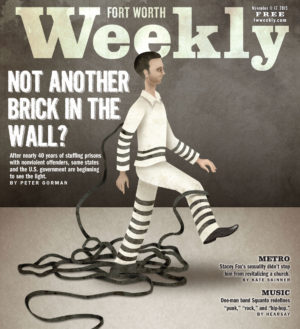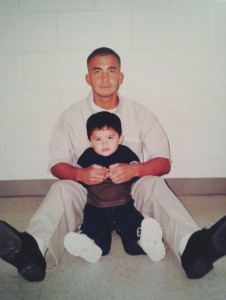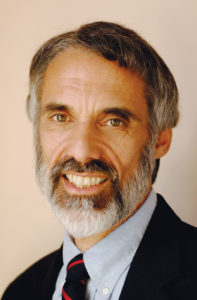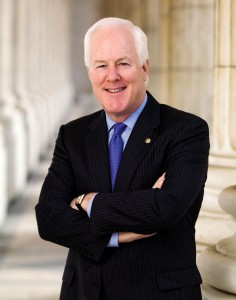We've been over-incarcerating for decades in the USA. That's beginning to change. Here's my new cover story from the Fort Worth Weekly newspaper on that subject. It's important, so spend a few minutes and read the thing. Thanks.
http://www.fwweekly.com/2015/11/11/not-another-brick-in-the-wall/
I evidently don't know how to make a live link, so here's the whole darned story:
Not another brick in the wall
After nearly 40 years of stuffing prisons with nonviolent offenders, some states and the U.S. government are beginning to see the light.
Posted November 11, 2015 by Peter Gorman in
News
 Not Another Brick in the Wall? Illustration by Vlad Alvarez.
Not Another Brick in the Wall? Illustration by Vlad Alvarez.
Jason Hernandez began selling marijuana in his McKinney neighborhood in 1992, when he was 15. At first, it was baggies, but within a couple of years he moved up to moving pounds. From there he moved on to selling crack cocaine, and by his own admission he was good at it.
“It’s what I did,” he said. “It’s what everyone in my neighborhood did at that time.”
And everything was working nicely for him until March 16, 1998, just about a month after his 21st birthday. That’s when the police came and arrested him. His crime? Conspiracy to distribute crack cocaine and methamphetamine, along with several other conspiracy charges.
But there wasn’t a speck of cocaine, crack, methamphetamine, or any other illegal drug on Hernandez, who thought it odd that the cops simply patted him down and didn’t search his place or car. “I didn’t have anything, but it turned out I wasn’t really the one they were after.”
Other dealers in the neighborhood had been picked up by the police, and when asked who their supplier was, many named Hernandez.
The feds took the case, and he was offered eight years if he would testify against another dealer. He wouldn’t. He went to trial, and a dozen people testified against him.

Jason Hernandez at age 23 with his 3 year old son. Courtesy of Jason Hernandez.
“I’m not going to deny what I did,” he told the Fort Worth Weekly. “I did sell drugs, but they didn’t catch me with any. It was a dry conspiracy.”
His sentence as a first-time offender convicted of a conspiracy in which no drugs were found? Life without parole. Plus 20 years. And another 20. And another 20. And another 20. And then 40 more years, and 40 more, and then 60 years on top of that, all to be served consecutively. And then eight years of parole and a $6,000 fine, just in case he outlived life without parole and the additional 200 years.
Hernandez’ case is not unique, though the sentence was unusually harsh. Hundreds of people around the country are serving life-without parole for first-time nonviolent drug offenses. Some are serving in state penitentiaries, some in the Federal Bureau of Prisons. Hundreds of thousands of other offenders are serving lesser but still harsh sentences for nonviolent drug offenses.

Jason Hernandez: “I’ve got to do well out here, so that other people get the chance.” Courtesy of Jason Hernandez
How such harsh drug sentencing came about is a mosaic of fear mongering, political expediency, and the tenor of the times. Its roots run deep, from the first anti-opium laws, aimed at the Chinese population in San Francisco near the end of the 19th century, through newspaper publisher William Randolph Hurst’s relentless war on marijuana that culminated in its being made illegal in 1937. President Richard Nixon declared a war on all illegal drugs in 1971 and then created the Drug Enforcement Administration to fight that war. That same year, New York Governor Nelson Rockefeller signed into law the harshest drug sentences in the United States. Politicians began outdoing one another to appear tough on drug crime. Add to that the federal mandatory minimum sentencing for drug crimes that was put in place in the 1980s, and several states’ Three-Strikes-You’re-Out laws in the 1900s, and the elimination of federal parole, and by the turn of the century, the United States had become incarceration nation.
Despite having both the highest percentage of its population behind bars and the highest total number of people in the criminal justice system, crime in the United States didn’t slow down at all. The harsh sentences didn’t appear to be a deterrent to drug crimes. The loss of early release on the federal level and the removal of safety nets once prisoners were released — including a ban on food stamps and the use of federally subsidized housing for felons — only caused recidivism rates to rise, which in turn led to prison over-crowding. The vast amounts of public monies being spent on keeping prisoners in prison were cut back on the rehabilitation end of the criminal justice system: In many prisons, libraries, GED classes, job training, and drug and alcohol therapy were frequently eviscerated or eliminated. Prisoners were being released with fewer and fewer options with which to successfully reintegrate to society.
It all came to a head in 2007 in Texas, when the state was faced with either building new prisons or finding out some other way to handle criminal justice. Surprisingly, Texas politicians said no to new prisons and embarked on changing their approach to incarceration. Other states and the feds took notice. In 2014, changes in federal sentencing laws allowed some drug felons to get out a couple of years early. In 2013, President Barack Obama stepped into the fray and commuted the sentences of eight drug offenders. And a bipartisan bill that would allow thousands of offenders to avoid prison altogether is expected to become federal law in early 2016.
“Somewhere in all of this, we, as a country, have modified our thinking and approach to criminal imprisonment,” said Mary Price, general counsel for Families Against Mandatory Minimums (FAMM), an organization fighting to eliminate mandatory drug sentencing. “And that’s partly because we’ve learned that public safety is not harmed when we don’t use prisons to address all these issues.”
Hernandez was one of 21 people granted clemency by Obama in November 2013. Of those, 13 were full pardons for people who had already finished serving their sentences, mostly for minor drug crimes. The other eight, which included Hernandez, were all sentence commutations for people serving at least 20 years — mostly life without parole — all for crack. Hernandez, who was serving time at the medium security federal penitentiary in El Reno, Okla., was overjoyed.
“I had written to so many people about my case and about eight other inmates who were in prison with me,” Hernandez said, “almost all of whom were serving life without parole for nonviolent first-time drug offenses. Most people wouldn’t believe we were all serving those sentences for nonviolent drug crimes.”
One who did was Michelle Alexander, an associate professor of law at Ohio State University and the author of The New Jim Crow: Mass Incarceration in the Age of Colorblindness.
Alexander connected Hernandez with the ACLU, with whom she had worked for several years with the Racial Justice Project in Northern California.
“The ACLU really led the charge for me,” Hernandez said. “And then I got the notice that my sentence was being commuted to 20 years, plus my parole and the $6,000 fine. I held that paper with President Obama’s signature on it for two days. I wouldn’t let it go. I was afraid it would disappear.”
Hernandez was moved to a halfway house in Hutchins, Texas, for a year and then released on August 11, 2015.
“I was the lucky one out of the El Reno group,” he said. “None of the other guys got their sentences reduced.”
Obama has since upped the ante on commuting sentences for nonviolent drug offenders. He commuted eight more in December 2014, and then 46 more in July 2015. All of them had served more than 10 years in prison. Many, like Hernandez, were due to die behind bars.
But before Obama began commuting a handful of the unduly harsh sentences levied against first-time non-violent drug offenders, several states had already begun making changes in incarceration policies for the same type of criminals. Surprisingly, the state that’s led the charge is Texas.
******
“Texas has certainly led the way,” said Holly Harris, executive director of the Justice Action Network, a national nonprofit devoted to reforming the criminal justice system. “What has been found during the decades of mass incarceration is that being tough on crime does not make us safer. The opposite is true. And Texas is the gold standard on this. Since they began implementing reforms in about 2007, most of Texas has the lowest crime rate it’s had since 1968.”

Douglas Smith: “Incarceration has decimated entire communities in Texas.”
Douglas Smith, a policy analyst with the Texas Criminal Justice Coalition, a nonprofit that promotes smart justice policies in Texas, knows that mass incarceration is not the answer.
“Incarceration has decimated entire communities in Texas,” he told the Weekly. “We’ve got over 700 people per 100,000 in our prisons in Texas, about seven times the incarceration rate of the U.K., which has the highest incarceration rate in Europe. But Texas recognized that it went too far.”
In 1993, a tough-on-crime penal code went into effect in Texas, which saw the number of people behind bars in the state skyrocket from 64,000 to 156,000 in 2007. That year, the Texas Department of Criminal Justice asked the legislature for $523 million to build three new prisons to account for the anticipated influx of new prisoners by 2012. It seemed like a no-brainer. The Chairman of the Senate Criminal Justice Committee, John Whitmire, a conservative Democrat from Houston, had helped usher in those tough-on-crime codes. In the House, Jerry Madden, a Republican from Plano, was chairman of the House Criminal Justice Committee.
“But they surprised everyone and didn’t do it,” Smith marveled. “They didn’t build the prisons.”
What they did, according to Governing.com, a website covering state and local governments, was team up and convince the legislature, Governor Rick Perry, and Lt. Governor David Dewhurst “to spend $241 million on treatment, mental health, and rehabilitation instead.”
Among the changes implemented with those funds, Smith said, was providing funding to county drug-diversion courts that try to steer people with nonviolent drug felonies toward rehabilitation rather than prison.
“Texas lawmakers also expanded the number of substance abuse and DWI treatment beds in the in-prison therapeutic communities, particularly for the longer treatment programs,” Smith said. “And then they also increased the number of halfway houses for those prisoners on release and increased after-care for them once they were released from the halfway houses.”
The result of those changes was a 30 percent reduction in parole revocations.
“We are still sitting on about 150,000 people in Texas prisons,” Smith said, “so we’ve got a very long way to go. But that might have been more than 170,000 by now if those changes hadn’t been implemented. Add to that vocational training, helping prisoners earn their GEDs, [and] helping them get jobs on the outside, and the result is less crime and fewer people in prison.”
What needs to happen next in Texas, Smith said, is to address the probation system in the state.
“Probation revocation is absolutely one of the drivers of mass incarceration in Texas,” he said. “Why? Because if you are poor, unemployed, a drug addict, or faced with overcoming mental illness, you don’t stand a chance on probation. The demands are simply too great. You have to pay for probation itself, pay a portion of your monitoring costs and a portion of your own classes. Too many probation departments in the state rely on those fees to pay the salaries of the people in those departments.”
Probation, Smith said, is supposed to be a time to partake in community service, address the reasons you committed your crime, and think about ways you can change your behavior.
“Unfortunately,” Smith said, “a major part of the probation meeting is ‘Did you bring the money?’ not ‘How is the job search going, and can I help you with anything?’ ”
While Texas still has a way to go, according to the Justice Action Network’s Harris, 30 other states have implemented Texas’ reforms and have seen similar successes –– and only eight years after Texas’ plan got underway.
The federal government also has begun to move in a similar direction.
“The first major change in the federal system involved the Inspector General of the Department of Justice placing the reduction of federal prison overcrowding on a short list of management challenges three or four years ago,” said FAMM’s Price.
“What was happening was that lawmakers realized we were spending money to lock people up that could be better spent on deterrents to those crimes. Every dollar spent on incarceration was a dollar that could not be spent on prosecuting really bad guys or keeping people out of jail. And we know now that it’s bad for public safety if everybody just gets locked up rather than dealing with drug offenders by getting them off drugs. We needed to spend our criminal justice dollars more wisely.”

Marc Mauer: “Not everyone who is applying is getting approved.”
The first major policy change in that direction occurred in 2014, when the Sentencing Commission, an independent agency in the judicial branch of government that sets sentencing guidelines and policies for federal courts, made a key alteration in drug sentencing policy. While the commission could not reduce mandatory minimum sentences below the 5-10-20-year structured plateaus, the group was able to eliminate some sentencing enhancements that gave someone with five years a seven- or eight-year sentence.
Marc Mauer, executive director of The Sentencing Project, a nonprofit working for reforms in sentencing law and alternatives to incarceration, explained: “Only the enhancement guidelines are affected. You cannot go below the mandatory minimum in your case. But if you had a 10-year mandatory minimum, and it was enhanced by two years, it can now be dropped back to the basic 10 years.”
Shortly after the commission made the change, the group made it retroactive. The result: Roughly 46,000 drug offenders in the federal prison system will be eligible to apply for early release — most will get one or two years, but some might get a four-year reduction — in the next several years. A little more than 6,000 of those offenders were released over the weekend of October 30 and November 2, with another 8,550 up for release by November 1, 2016.
In the first group of 6,000, roughly two-thirds were sent to halfway houses or placed under house arrest. The other 2,000 are foreigners, who will quickly be deported. Almost 600 of those prisoners were released in Texas, leading some people to bemoan the fact that our streets will be overrun with criminals. But Smith scoffs at that.
“I believe 578 of those released are returning to Texas,” he said, “but the Texas Department of Criminal Justice releases more than 70,000 per year, so the difference won’t be noticed.”
Smith does concede that with reentry resources extremely limited and with no new federal programs in place to help those released early, any additional influx will strain the community. “But the number is so relatively small,” he said, “I don’t think it will be a huge issue.”
Surprisingly, there has been little pushback against the reformed guidelines. New York City Police Commissioner Bill Bratton has voiced his concern that the mass release will put dangerous criminals on the streets. On a recent radio broadcast with John Catsimatidis, Bratton said, “One of the issues of concern is when people go to jail, oftentimes they go to jail with negotiated charges, if you will, so that somebody that is in jail [who] seems like they’re a nonviolent drug offender may in fact have crimes of violence in their record.”
Bratton pointed to the case of Tyrone Howard, a young man with a record of 28 arrests who shot and killed New York City Police Detective Randolph Holder on October 20. Howard had been arrested for a shooting in 2009 — he was not indicted for that — but he was sent to a drug diversion program rather than prison for a recent drug bust.
The Sentencing Commission is hoping such horror stories do not play out now. To avoid any potential problems, each prisoner will have to apply for his or her sentence reduction. Their histories will be evaluated.
“Every one of these prisoners has to be approved by a judge,” Mauer said. “And not everyone who is applying is getting approved. Thus far, about three out of four have been approved, but that other 25 percent has been denied. So they are getting some scrutiny.”
The early release of some drug offenders is a very good start, Mauer said, but it’s only a start: “It’s symbolically very significant because it’s the federal system, but it’s also only a start because it only affects the federal system. We need to do it in every state as well. And then the mandatory minimum issue needs to be addressed as well.”
Bob Libal of Grassroots Leadership, an organization working to eliminate private prisons, agreed with Mauer’s assessment: “It is a very good start toward drawing down the extremely punitive way we’ve treated people for drug offenses. Drug issues are representative of how we lock people up for so many things in our society, from addiction to mental health issues, to poverty. But we’re going to need changes on the state and local levels as well as the federal level.”
******

The bill is largely based on the Corrections Act that Sens. John Cornyn (above) and Sheldon Whitehouse (D-RI) introduced earlier this year.
The biggest change in the federal approach to sentencing may arrive in early 2016. Authored by Senator Chuck Grassley, chairman of the Judiciary Committee, The Sentencing Reform and Corrections Act of 2015 recently made it out of committee and will likely be voted on early in the 2016 session of Congress. According to a press release by Texas Senator John Cornyn, the bill is “largely based on the Corrections Act [that] Sens. Cornyn and Sheldon Whitehouse (D-RI) introduced earlier this year that builds on successful reforms implemented in Texas that reduced crime and saved taxpayers more than $2 billion.”
Among the bill’s provisions, it reduces enhanced penalties for repeat drug offenders and eliminates the three-strike mandatory-life provision for all but offenders with serious violent priors. It also will allow low-level drug offenders, even ones facing a 10-year minimum, to be placed in treatment rather than prison.
Just as importantly, the bill will require the Department of Justice to “conduct risk assessments to classify all federal inmates and to use the results to assign inmates to appropriate recidivism reduction programs, including work and education programs, drug rehabilitation, job training, and faith-based programs.”
Those prisoners who complete those programs can see their sentences reduced and spend as much as the last quarter of their sentences in home confinement or a halfway house.
Libby Hambleton, Cornyn’s deputy press secretary, told the Weekly that the bill “will make it mandatory for federal prisoners to be offered vocational training, schooling, and a host of other programs that will make their transition to the world outside of prison a less turbulent experience and one which would arm those former prisoners with better tools to help succeed and lower recidivism.”
With the backing of a wide swath of conservatives and liberals in Congress, as well as the blessing of both the ACLU and the Koch brothers’ political arm, ALEC, the bill is expected to meet little resistance on its way to passage. If passed, it would be the first real chink in the mandatory minimum wall.
Matt Simpson, an ACLU attorney, sees the bill as an important step: “Pulling people from their community and incarcerating them creates reentry problems for them down the road. But if you can keep them on probation or in a treatment center and in their community, it will sidestep undermining their social support network. There are major benefits to avoid incarceration.”
One of the key elements to the bill that struck Smith deals with reintegration: “The bill says the prison has to work with someone for at least six months prior to their release to plan on their reentry into the non-prison world. That’s the most crucial time if you want to prevent the person from coming back to prison. You need to help them plan for the transition because they’re about to face major barriers with housing and employment while they’re trying to reintegrate.”
Jason Hernandez knows he’s one of the lucky ones. His mother and father were still alive when he got out in August, and they welcomed him home. “Having a place to stay is so important,” he said. “If I didn’t have them, I’d probably be living on the street. And if you don’t have a place to stay, well, they can revoke your parole.”
Hernandez doesn’t claim the world is perfect for him: “It’s not like life is going beautifully for me, because it’s not. I have my down times. But compared to waking up every day for the last 17 years thinking I was going to die in prison, it’s great. But there’s lots of jobs I can’t get, and some girls who won’t date me once they find out I’ve been in prison.”
Hernandez said that some of the people getting out of prison, even with good tools, are going to reoffend. “But what’s the solution? Just letting them die in prison? It’s hard to get back into life, and not everyone is going to make it.”
The absence of safety nets for former prisoners bothers
Hernandez a great deal, although even that is beginning to move in a positive direction: while food stamps were federally banned for drug felons
in 1996, most states have since loosened those laws, but the SNAP benefits
generally come with strings. In Texas, first time drug felons regained the
right to receive the benefits on Sept 1 of this year, though a parole violation
gets them suspended for two years, and a second drug conviction reinstates the
lifetime ban. Federal educational grants have become available for most drug
offenders as well, but come with qualifiers that many cannot meet.
“Look,
we’re all but banned from getting Section 8 housing. And if you don’t have a
place to live, you’re in trouble,” said Hernandez. “And we often owe 10-15
years of back child support on top of whatever fines we have to pay. There are
some churches that might help you out, but other than that there is basically
nothing. You’re on your own.”
He was particularly happy to hear Obama say that he was banning the box on applications for federal employment that asks if a person has ever been convicted of a felony: “I didn’t get a single interview from any application where I checked that box. It was only when I got to meet someone face-to-face, and he said, ‘Hey, you look like a pretty good guy. I’ll give you a chance,’ that I got a job. Banning the box is fantastic. At least get to meet the person before you find out they have a prison record.”
Society, Hernandez said, should offer everyone coming out of prison the basics: food, housing, and a chance at a job. He has a full-time job as a welder and works part-time as a kitchen mentor at Café Momentum in Dallas, whose owners hire only formerly incarcerated youngsters and train them in all aspects of restaurant work during a year-long program. Hernandez also talks to at-risk kids about his life experience.
“I know how lucky I am,” he said. “And I know I’ve got to do well out here, so that other people get the chance.”
Others will get the chance, FAMM”s Price said: “I think the momentum from impossibly harsh sentencing for nonviolent drug crimes has changed. I don’t think we’ll go back to the way we did it again.”





